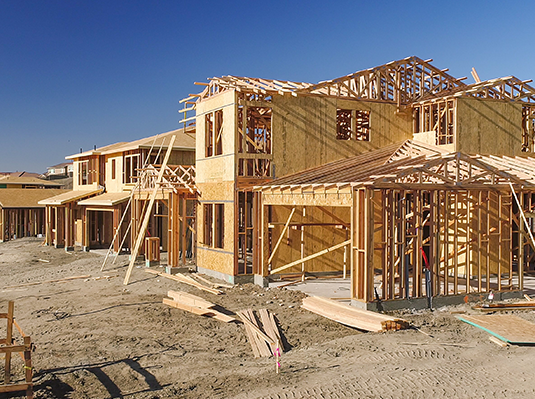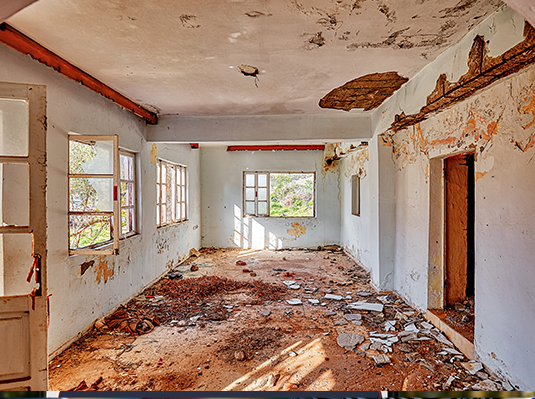
Did you know that your homeowners insurance policy is actually broken into several smaller parts? The section of your insurance policy that covers your actual home — not your television or refrigerator, but the floors, walls, and roof that make up your house — is referred to as your dwelling coverage.
This is the portion of your insurance policy that will rebuild your home if there is a fire or other disaster, so it is important not to skimp on your dwelling coverage.
What is the difference between dwelling coverage and homeowners insurance?
Your homeowners insurance is actually made up of several types of coverage that all come together to protect you in the event of a disaster. Whether you lost your home to a fire or a neighbor injured themselves falling through your deck, there is a section of your homeowners insurance that is designed to protect you in almost every situation. Your homeowners insurance will typically include:
- Dwelling coverage - Dwelling coverage protects the physical structure of your home.
- Other structures coverage - Other structures coverage protects structures on your property that are not attached to your home, such as sheds, detached garages, and swimming pools.
- Personal property coverage - Personal property coverage pays to repair or replace your belongings, such as your furniture and electronics.
- Loss of use coverage - If you cannot live in your house because of a covered peril, your loss of use coverage will pay for a hotel room or other living space while your home is being repaired.
- Personal liability coverage - If someone is injured on your property, your personal liability coverage will pay for their medical bills and your legal fees up to your policy limits.
- Medical coverage - If someone is injured on your property, medical coverage provides a small amount (typically less than $5,000) towards medical bills in an attempt to prevent a lawsuit or larger payout from your personal liability coverage.
Dwelling coverage is the largest part of your homeowners insurance policy and the rest of the coverages (except for liability) are determined based on the dwelling coverage limit you’ve chosen. For example, personal property coverage is usually set at 50% of your dwelling coverage limit, so if you have $150,000 in dwelling coverage your personal property coverage would have a maximum benefit of $75,000.
How much should dwelling coverage be for a house?
It is vital that you have enough dwelling coverage to rebuild your home, but how much will that cost? Dwelling coverage is usually the most expensive part of your homeowners insurance for a good reason — your home is almost always the most valuable thing you own.
Your dwelling coverage should always be enough to completely rebuild your home from the ground up, which does not include the cost of the land because the land is almost never affected by covered disasters such as fires or windstorms. This means that your dwelling coverage is not the same as the amount of your mortgage. In fact, the two aren’t necessarily connected at all.
Because everyone’s situation is different, there is no specific amount that dwelling coverage is “supposed” to cost. You need enough to cover the cost of replacing your home, which means you need to consider all of the details of your home. Do you have detailed crown moulding, wainscoting, or other decorative details that would need to be replaced if you suffered a total loss? You need to keep these things in mind when choosing a dwelling coverage limit.
Is dwelling coverage the same as replacement cost?
Dwelling coverage is, by definition, replacement cost insurance. What would it cost to replace your home if every inch of it were destroyed? That is how much dwelling coverage you need to have in your insurance policy.
Don’t fool yourself into thinking you can lower your dwelling coverage to save money on your insurance. Most lenders require you to carry enough insurance to completely rebuild your home. In fact, there are many people who should consider increased dwelling coverage rather than lowering their limits.
Is there dwelling coverage for a condo?
Condo insurance is different from a typical homeowners insurance policy. Because the physical structure of your condo is owned and insured by an HOA master policy, dwelling coverage for people living in a condo is usually (but not always) much closer to renters insurance than it is a traditional homeowners insurance policy.
However, each condo situation is different, so you want to know what type of insurance policy your condo association has in place to figure out exactly what coverage you need. Your HOA may have one of three types of coverage, including:
- Bare walls coverage: This covers the structure of the building, common areas, and any personal property that belongs to the HOA. Bare walls coverage usually provides a minimal amount of structural coverage for your unit, protecting things like drywall, insulation, wiring, plumbing, etc.. If your HOA has this type of master policy, you’ll need enough dwelling coverage to replace the entirety of your condo.
- Single entity coverage: Sometimes known as “walls-in” or “studs-in” coverage, this includes the same structures as a bare walls policy, but coverage for the structures inside your unit includes anything that was there when you moved in, such as cabinets, flooring, bathroom fixtures, etc. You may still need additional dwelling coverage if your HOA has a single entity policy.
- All-in coverage: This is the most comprehensive type of master policy. It covers the entire interior structure of your unit, including any improvements or changes you have made, such as replacing the refrigerator or installing new fixtures in the bathroom. If your condo HOA carries all-in coverage you probably don’t need any additional dwelling coverage under your homeowners policy.
Goosehead Insurance typically recommends a single entity or “walls-in” policy for condo policies, but every situation is unique. If you have questions about your condo insurance you can reach out to our experts for more information.
How is dwelling coverage calculated for homeowners insurance?
There are many factors you should consider when determining how much dwelling coverage you need, including:
- Local construction costs
- Square footage of your home
- Type of wall construction (frame, masonry, etc.)
- Style of the house (raised ranch, colonial, etc.)
- The age, style, and materials used to build your roof
- Special details and design (stained glass windows, hand carved mantels, etc.)
- Whether or not the house was custom built
- Renovations and additions since you’ve purchased the house
All of these things will impact the amount of dwelling coverage you need to be fully protected. If you have questions or want someone to guide you through the process of determining the right amount of dwelling coverage you can always reach out to one of our experts here at Goosehead Insurance for assistance.
The contents of this article are for informational purposes only. You should not act or refrain from acting based on this information without first consulting a Goosehead licensed agent at [email protected]. We disclaim all liability for actions taken or not taken by you based on the contents of this article which is provided "as is". Goosehead makes no representation that this content is error-free.

